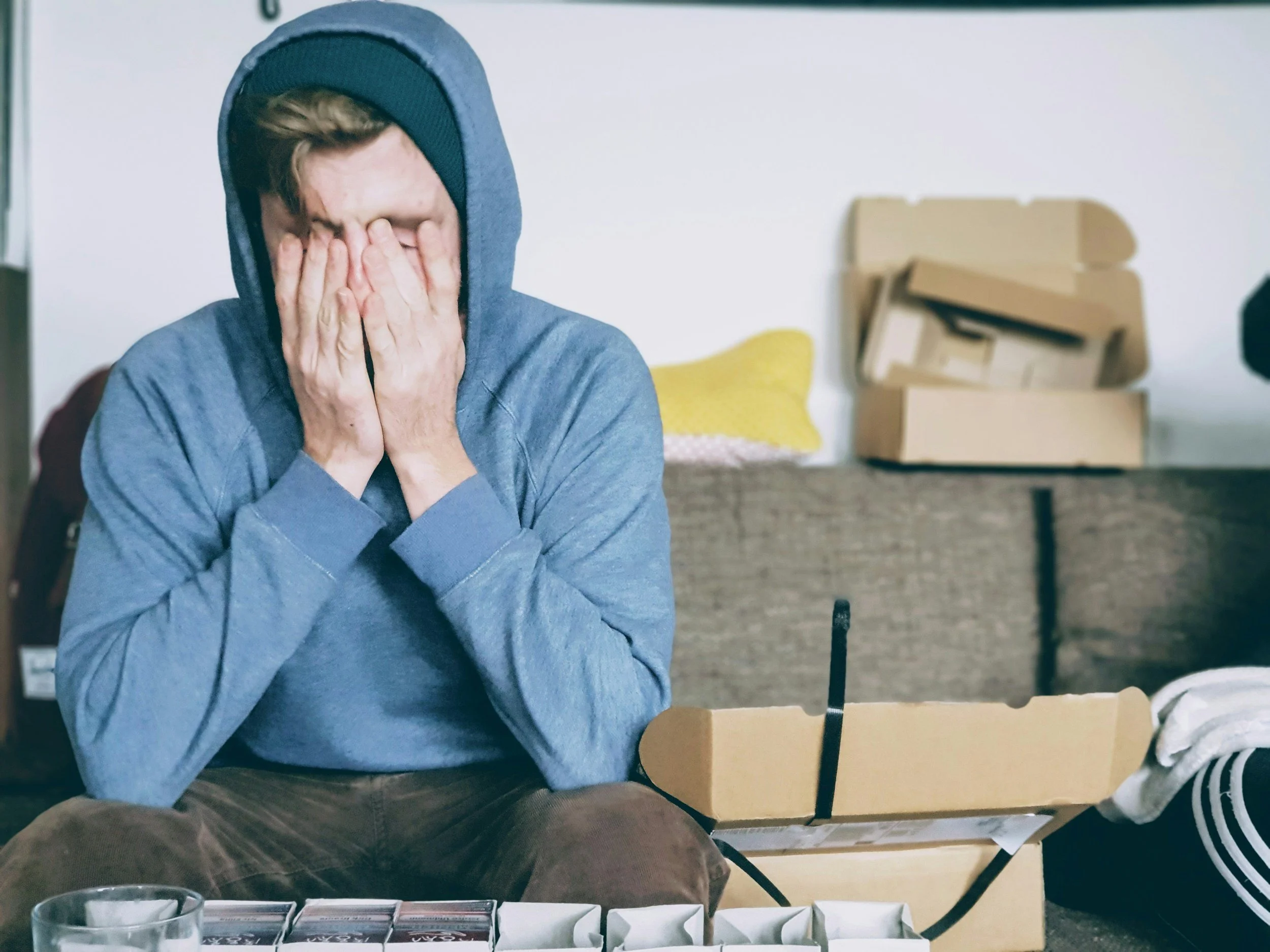The Relationship between Anxiety and Avoidance
by Jenna Kennedy
Anxiety often feels like the enemy — but what if it's not the anxiety itself, but how we respond to it, that keeps us stuck?
It shows up in many forms — maybe it’s anxious thoughts spinning in the brain, maybe it’s feeling physically sick, or maybe it’s a racing heart. However it shows up, anxiety has one thing in common for everyone: it's deeply uncomfortable. So much so that we’ll often do anything to make it go away as quickly as possible.
So we avoid.
We cancel the plans, delay the task, scroll past the email, or distract ourselves in any way we can. Once we get the anxiety symptoms to go away, we feel relief and everything seems fine again... until a similar situation or trigger happens, and we’re right back to feeling anxiety. Often stronger than before.
This is the anxiety-avoidance cycle, and it happens on loop until something changes. We have an anxiety trigger, we avoid it and feel short-term relief — but then the anxiety intensifies in the long term. Anxiety thrives on avoidance.
The more we avoid, the more our brain learns that avoidance “works,” reinforcing the idea that we can’t handle the discomfort. Over time, our tolerance for anxiety shrinks, and more situations start to feel overwhelming or impossible to manage.
Sometimes, we’ve been stuck in this pattern for so long that it becomes automatic. We don’t even realize how often we’re avoiding — or how much we’ve built our lives around dodging discomfort. What began as a coping tool becomes a barrier to fully living. When this happens, it can be hard to imagine that anything could be different.
But there is a way to break the cycle and rebuild tolerance.
Breaking the Cycle
The way out of the loop is to begin confronting anxiety triggers rather than avoiding them. Sometimes people are able to “rip off the bandage” and jump right into the trigger, managing any discomfort that arises. But other times, a slower, more gradual approach is necessary.
Listed below are some gentle strategies that can help:
Name it: Awareness is the first step. Pay attention when you’re avoiding something. Ask yourself: What am I feeling? When you notice anxious physical symptoms, try to observe what avoidance urges are coming up.
Start small: Challenge your anxiety in small, manageable steps. This might mean making one phone call, doing one task, or showing up for a short part of a social event. Confidence builds from success.
Be self-compassionate: Avoidance can often bring up feelings of guilt or shame. Treat yourself with kindness rather than judgment during this process. Changing this pattern is hard – and often slow work.
Seek support: Ask loved ones for support and accountability. Sometimes anxiety and avoidance become so ingrained that professional help is necessary. Therapists and support groups can offer guidance and structure for change.
Therapist Aid. (n.d.). Cycle of avoidance: The anxiety trap [Worksheet]. Therapist Aid. https://www.therapistaid.com/therapy-worksheet/cycle-of-anxiety Therapist Aid
Butterfield, A. (2021, December 13). Understanding the cycle of anxiety. The OCD & Anxiety Center.https://theocdandanxietycenter.com/understanding-the-cycle-of-anxiety/The OCD & Anxiety Center

